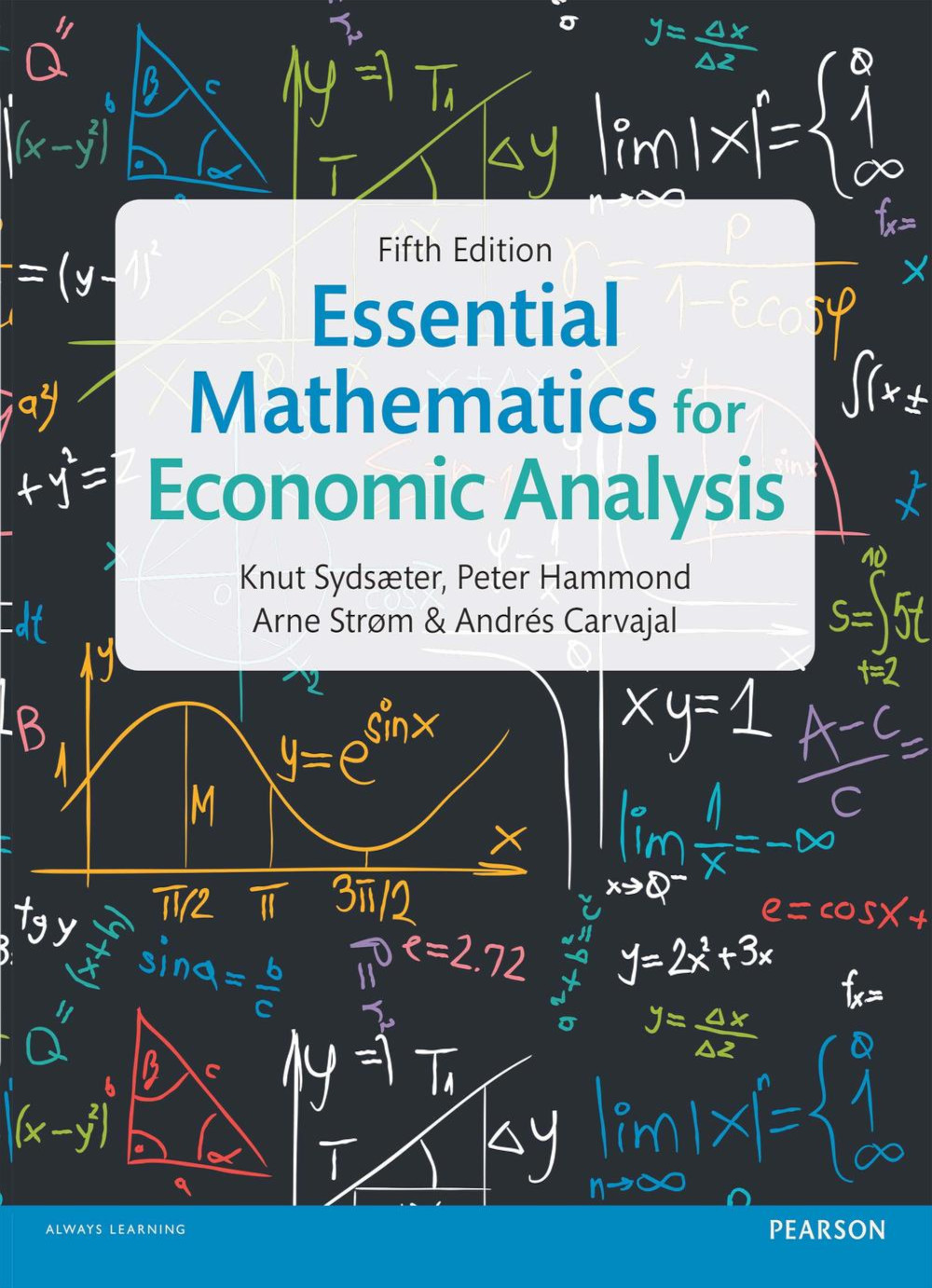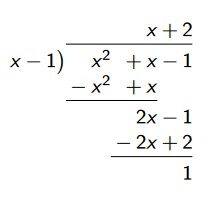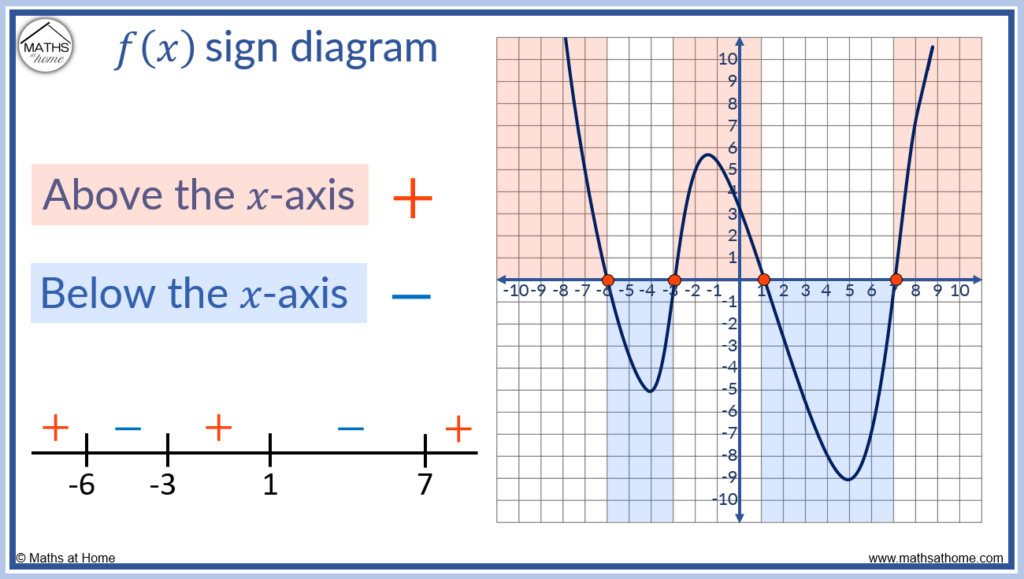Announcements & Reminders
Results of Online test 1: most common mistakes
Question from Discussion forum: go over examples of sets in economics
Orienteering at CBE on Wednesday March 13th, 12:00, behind CBE building. More information

📖 Equations and inequalities#
⏱ | words
Sources and reading guide

[Sydsæter, Hammond, Strøm, and Carvajal, 2016]
Chapters 2 and 3
Additional references also include material on binary relations which is excluded.
Introductory level references:
[Bradley, 2013]: Chapters 1, 2, and 4
[Haeussler Jr and Paul, 1987]: Chapters 1, 2, and 4
[Shannon, 1995]: Chapters 1, 2, and 6
More advanced references:
[Corbae, Stinchcombe, and Zeman, 2009]: Chapter 2 (pp. 15-71)
[Kolmogorov and Fomin, 1970]: Chapter 1 (pp. 1-36)
[Gravelle and Rees, 1981]: Chapter 3 (pp. 55-95)
[Kreps, 1990]: Chapter 2 (pp. 17-69)
[Mas-Colell, Whinston, and Green, 1995]: Chapters 1-3 (pp. 5-104)
[Rubinstein, 2006]: Chapters 1-4 (pp. 1-51)
[Varian, 1992]: Chapter 7 (pp. 94-115)
General equations/inequalities#
Consider two real-valued functions that have the same domain (\(X\)), \(f: X \rightarrow \mathbb{R}\) and \(g: X \rightarrow \mathbb{R}\)
An equation takes the form \(f(x) = g(x)\)
Traditionally we call \(f(x)\) a left hand side (LHS) and \(g(x)\) a right hand side (RHS)
An inequality takes one of the forms \(f(x) \leqslant g(x)\), or \(f(x) \geqslant g(x)\), or \(f(x) > g(x)\), or \(f(x) > g(x)\)
Note that if we let \(h(x) = f(x) - g(x)\), then we can rewrite these various equations and inequalities as \(h(x) = 0, h(x) \leqslant 0, h(x) \geqslant 0, h(x) < 0\), and \(h(x) > 0\)
Definition
Given a real-valued function \(h: X \rightarrow \mathbb{R}\), an expression \(h(x) = 0\) is called an equation, and an expressions \(h(x) \leqslant 0\) (and \(h(x) < 0\)) is called a weak (and a strict) inequality
Definition
Solution to an equation/inequality \(h(x) = 0\) consists of the set of values of \(x \in X\) that ensure the equality/inequality is satisfied
Elementary transformations#
Given an equation or inequality in the form \(f(x) \square g(x)\) where \(\square\) stands for \(=\), \(<\),\(\leqslant\),\(\geqslant\) or \(>\), we can perform the following elementary operations:
addition/subtraction of any quantity \(A\) to both sides:
multiplication/division by any quantity \(A\ne 0\) of both sides (for equations):
multiplication/division by any quantity \(A>0\) of both sides (for inequalities):
multiplication/division by \(-1\) of both sides of inequalities:
Example
Solving equations and inequalities#
Definition
The solution to this equation \(h(x) = 0\) or inequality \(h(x) \leqslant 0\), where \(h: X \to \mathbb{R}\) consists of the set of values of \(x \in X\) that ensure the equality or inequality is satisfied, i.e. \(S = \{x \in X : h(x)=0\}\) or \(S = \{x \in X : h(x)\leqslant0\}\)
To find a solutions means to specify all elements of \(S\) or to show that \(S = \varnothing\)
Note
A partial solution (when some but not all elements of \(S\) are found) results in partial grade
Note
Be careful about the domain of \(h(x)\), as the solution \(S\) has to satisfy \(S \subset X\). Failure to recognize this also lowers your grade
All-in-all, solving equations and inequalities can be tricky Yet, it is a crucial skill in economics and general math
Example
Wrong! \(2^4 = 16\) therefore the answer to the problem is \(x=2\)
How many solutions?
Example
Wrong! Because \(x^2 \geqslant 0\) for all \(x\), the inequality above is satisfied for all \(x \in \mathbb{R}\)
What is domain of \(1/x^2\)?
Polynomial equations#
Definition
A polynomial equation is an equation of the form
where \(a_i\) are called coefficients, and \(n\) is called the degree (of the polynomial in LHS)
In other words, when \(h(x)\) is a polynomial, the equation inherits the name
\(h(x)\) is a univariate polynomial because \(x\in \mathbb{R}\), one dimensional space
Note that because by definition \(a_n \ne 0\) we can rewrite a polynomial equation as
This in turn can be written as
where \(b_k = \frac{a_k}{a_n}\) for all \(k \in \{0, 1, 2, · · · , n − 1\}\)
Definition
Univariate polynomials in which the leading coefficient is equal to one are referred to as monic
Definition
A root of a polynomial \(a_n x^n + a_{n − 1} x^{n − 1} + · · · + a_1 x + a_0\) is the value of \(x\) that makes the polynomial equal to zero
Therefore, finding roots of polynomial functions is the same as solving polynomial equations
Solutions of polynomial equations#
The following fundamental result on the number of roots of a polynomial is invaluable in solving polynomial equations!
Fundamental theorem of algebra
Every non-zero, single-variable, degree \(n\) polynomial with complex coefficients has, counted with multiplicity, exactly \(n\) complex roots
In this course we shall be using the “baby” version of the theorem, as we are not talking about complex numbers
Fundamental theorem of algebra (version without complex numbers)
Every non-zero, single-variable, degree \(n\) polynomial has at most \(n\) real roots
There are two important points:
Some of the solutions might be the same, this is the case of “repeated roots”
Some of the solutions might be complex numbers with a non-zero imaginary component
The theorem is still very useful. If the solutions to the polynomial equation
are denoted by \(\{x_1, x_2, · · · , x_n\}\), then we can write the polynomial function on the left-hand side of the equation as
This is possible with any polynomial of degree \(n\), independent of whether the coefficients are real or complex
Example
Equation \(f_1(x)=0\) has solutions \(x_1 = x_2 = −5\)
Example
Equation \(f_2(x)=0\) has solutions \(x_1 = −5\) and \(x_2 = 5\)
Example
Equation \(f_3(x)=0\) has solutions \(x_1 = −9\) and \(x_2 = −1\)
Linear equations#
Consider the following polynomial of degree one
This is a linear (or, more precisely, an affine) function
remember that strictly speaking, linear functions are affine functions for which \(b = 0\)
The corresponding polynomial equation is
This is a linear equation. We can solve the linear equation as follows:
The last step is allowed because \(a \ne 0\).
Thus we have a formula that provides the unique solution for any linear equation
Example
Consider a firm that produces a single good. Suppose that the firm faces a demand curve for this good that is perfectly elastic at the price \(P\) (recall what this implies!). The firm has a fixed cost of \(F\) and a constant marginal cost of \(c\) per unit of the good that is produced. We will assume that \(0 \leqslant c < P\)
The firm’s total revenue is given by \(R(Q) = PQ\)
The firm’s variable cost is given by \(V(Q) = cQ\)
The firm’s total cost is given by \(C(Q) = F + V(Q) = F + cQ\)
The firm’s profit is given by
The firm will break even when
The equation of a straight line#
Definition
A straight line in Euclidean two-space (\(\mathbb{R}^2\)) can be expressed as a set of ordered pairs of the form
where \(a \ne 0\).
\(a\) is the gradient (or slope) of the line
\(b\) is the y–intercept (or simply the intercept)
We will now look at two alternative methods for finding the equation of a straight line and the relationship between them
Point-slope formula#
Suppose you are told that a straight line has a slope equal to \(a\) and that the point \((x_1, y_1)\) lies on the line. You can find the equation of this straight-line by using the following formula:
This formula is known as the “point-slope formula”. We can rearrange the point-slope formula to obtain
Thus the y−intercept for this straight line is given by \(b = (y_1 − ax_1)\)
Example
Find the equation of the straight line with slope \(-2\) that passes through the point \((1, 2)\).
Using the formula above we have
Two-point formula#
Suppose you are told that two distinct points, \((x_1, y_1)\) and \((x_2, y_2)\), both lie on a straight line. You can find the equation of this straight-line by using the following formula:
This formula is known as the “two-point formula”. We can rearrange the two-point formula to obtain
Thus the gradient (or slope) of this straight line is given by \( a = \left( \frac{y_2 − y_1}{x_2 - x_1} \right)\) and the y –intercept for this straight line is given by \( b = y_1 − \left( \frac{y_2 − y_1}{x_2 − x_1} \right) x_1\)
Example
Find the equation of the straight line that passes through the points \((1, 2)\) and \((-1, 4)\).
Using the formula above we have
Rise over run#
The slope of a straight line can be expressed as
where “rise” is the vertical distance travelled in a northerly direction, and “run” is the horizontal distance travelled in an easterly direction
Travel in a southerly direction is measured as negative travel in a northerly direction
Travel in a westerly direction is measured as negative travel in an easterly direction
The formula for the slope of a straight line that connects the two distinct points \((x_1, y_1)\) and \((x_2, y_2)\) is given by
If we substitute the slope formula into the point-slope formula, we obtain
If we divide both sides of this equation by \((x − x_1)\), we obtain
Recall that this is the two-point formula
X and Y intercepts of a straight line#
Consider the straight line that is given by the equation \(y = ax + b\)
The y−intercept of this this straight line is \(b\) (or, more accurately, it is the point \((0, b)\)). This is obtained by setting \(x = 0\) in the above equation and solving for \(y\).
The x−intercept of this this straight line is \(\frac{−b}{a}\) (or, more accurately, it is the point (\(\frac{−b}{a}, 0\))). This is obtained by setting \(y = 0\) in the above equation and solving for \(x\)
Example: A budget line
A budget line consists of the set of commodity bundles that ensure that a consumer’s expenditure exactly matches his or her income. The equation for a budget line in a two-commodity world is
We can rearrange the budget-line equation to obtain
Thus we know that the slope of the budget line is equal to \(−( \frac{P_1}{P_2})\) and the \(Q_2\)–intercept is the point \((0, \frac{Y}{P_2})\)
We can also show that the \(Q_1\)–intercept is the point \((\frac{Y}{P_1}, 0)\)
Example: A linear demand curve
Suppose that we have a linear demand curve:
where \(a > 0\) and \(b > 0\)
The corresponding inverse-demand curve can be found as follows:
Note the inverse demand curve is also linear when the demand curve itself is linear
Marshallian convention for demand and supply graphs
VERY IMPORTANT: Note the unusual “Marshallian convention” that is used when graphing demand curves in economics
Normally, we think that consumers take prices as given and choose quantities. This means that price is the independent variable and quantity is the dependent variable. As such, demand functions express quantity as a function of price
The standard mathematical graphing convention is to place the independent variable on the horizontal axis and the dependent variable on the vertical axis
However, in economics, we typically place price (the independent variable) on the vertical axis and quantity (the dependent variable) on the horizontal axis when graphing demand curves
The Marshallian convention means that, while we talk about demand curves, we actually draw inverse demand curves
This means that you need to be careful when moving from the equation for a demand curve to the graph of that demand curve if you are going to follow the Marshallian convention when graphing demand curves
The slope of this demand curve is equal to (\(−b\)) and the Q−intercept is the point \((0, a)\) in \((P, Q)\)–space.
It can be shown that the P–intercept is the point \((\frac{a}{b} , 0)\) in \((P, Q)\)–space
The slope of the inverse demand curve is equal to \(\{−( \frac{1}{b})\}\) and the P–intercept is the point \((0, \frac{a}{b})\) in \((Q, P)\)–space
It can be shown that the P–intercept is the point \((a, 0)\) in \((Q, P)\)–space
Illustrations on the board
Quadratic equations#
Consider the following polynomial of degree two: \(f(x) = ax^2 + bx + c\) where \(a \ne 0\). This is a quadratic function. The corresponding polynomial equation is a quadratic equation.
Fact
The two solutions to the quadratic equation \(ax^2 + bx + c = 0\) are given by the quadratic formula:
In other words, we have
Proof
The proof is by completing a square:
Definition
The discriminant of the quadratic equation \(ax^2 + bx + c = 0\) is given by \(D = b^2 - 4ac\).
Fact
There are three possibilities for a quadratic equation \(ax^2 + bx + c = 0\):
two repeated (identical) real roots when \(D = 0\)
two distinct real roots when \(D > 0\)
no real roots (and instead two distinct complex roots) when \(D < 0\)
In this unit, we will not cover complex numbers. As such, we will only be interested in real solutions to quadratic equations.
Monic quadratic equation#
Consider a special case of a quadratic equation with the leading coefficient equal one, which can be obtained from a general form by dividing both sides by \(a\)
The quadratic formula simplifies to
Now observe that
Viète’s formula
The sum of the roots of a monic quadratic equation \(x^2 + bx + c = 0\) is equal to \(−b\) and the product of the roots is equal to \(c\)
Example
The equation of a parabola#
A parabola \(\mathcal{P}\) in Euclidean two-space \(\mathbb{R}^2\) is a set of points with coordinates that satisfy a quadratic equation
where \(a \ne 0\). The equation of this parabola is given by
Recall the shifting of the graph mechanics to realize how the parabola shifts/compresses in space
We can complete the square to obtain the required \(af(bx+c)+d\) graph-shifting form of the general quadratic function
\(a\) determines how tight the parabola is (squeezed/stretched across either the x or y axis)
sign of \(a\) determines whether parabola is facing up or down
shifted horizontally from the origin by \(\tfrac{b}{2a}\) to the left
shifted vertically by \(c - \tfrac{b^2}{4a}\)
Example: A quadratic break-even problem
Consider a monopolist that produces a single good. Suppose that the demand function for this good is \(Q = 65 − 5P\). The monopolist has a fixed cost of $30 and a constant marginal cost of $2 per unit of the good that is produced.
The monopolist’s variable cost function is $\(V (Q) = cQ\)$
The monopolist’s total cost function is
Let the given inverse demand function be
The monopolist’s total revenue function is then given by
The monopolist’s profit function is
Note that this monopolist’s profit function is an “upside down” parabola
The firm will break-even when it makes exactly zero profit. This requires that \(\pi(Q) = 0\), which in turn requires that
Upon multiplying both sides of this quadratic equation by (−5), we obtain another quadratic equation of the form
This second quadratic equation is equivalent to the first quadratic equation in the sense that it will have identical solution values for the variable \(Q\)
We know from the quadratic formula that
Thus the monopolist will make:
negative profits when \(Q \in (0, 2.88) \cup (52.12, \infty)\) (approximately),
zero profits when \(Q \in \{2.88, 52.12\}\) (approximately), and
positive profits when \(Q \in (2.88, 52.12)\) (approximately)
The break-even points are \(Q \approx 2.88\) units of output and \(Q \approx 52.12\) units of output.
[Bradley, 2013] Example 4.9 on pp. 162-163
Higher order polynomial equations#
We have seen that polynomial equations with \(n \in \{1,2\}\) have nice formulas for their solutions.
“Nice” is dependent on the coefficients, involving algebra and radicals (square and possibly \(n\)-roots)
What happens in higher orders?
\(n = 3\)#
Consider the following polynomial of degree three:
where \(a \ne 0\). This is a cubic function. The corresponding polynomial equation is a cubic equation.
Solving the cubic equation has a rich history (see excellent videos linked in the end of this note).
The formulas known today are known as Cardano’s formulas, and they are quite complex 🤓
The substitutions are due to the substitution \(x \rightarrow x-\tfrac{b}{3a}\). We get
Definition
This form of cubic equation is called depressed cubic.
Example
Source: Mathologer
Example
But for \(x=4\) we have \(64 - 24 -40 = 0\), so \(x=4\) is a solution to the equation!
Source: Mathologer
Example
However, we can check by plugging the values back into the equation that \(x_1=-2\), \(x_2=1-\sqrt{3}\) are \(x_3=1+\sqrt{3}\) are the three real solutions to the equation!
Source and further explanation: Mathologer
Example (preview into the complex numbers)
Let’s look at the simplest case
Solution is \(x = 1\). But where are the other two solutions?
Well, remember that \(x^3-1 = (x-1)(x^2+x+1)\) \(\Rightarrow\) the other two roots must be in the quadratic equation.
Applying the quadratic formula and denoting \(\sqrt{-1}=i \Leftrightarrow i^2=-1\) we have
Let’s verify that these are indeed the solutions to \(x^3 = 1\)
Therefore, all of the solution of \(x^3=1\) are \(x_1=1\), \(x_2=\frac{(-1 + i\sqrt{3})}{2}\) and \(x_3=\frac{(-1 - i\sqrt{3})}{2}\), where \(x_1 \in \mathbb{R}\) and \(x_2,x_3 \in \mathbb{C}\) (complex numbers).

Fig. 22 Cubic roots of unity#
there are exactly \(n\) complex roots to the equation \(x^n=1\) according to the Fundamental theorem of algebra
these roots are evenly distributed along the unit circle in the complex plane
taking a power \(n\) of each root rotates the point along the unit circle
therefore any root of unity to power \(n\) lands exactly at 1
Definition
Roots of unity are complex solutions to an equation \(x^n=1\)
radicals such as \(\sqrt[3]{\cdot}\) applied to complex numbers result in multiple points!
the Cardano’s formulas operate in the complex plain
therefore even when the solutions to a cubic equation are real, the expressions may involve complex numbers!
\(n = 4\)#
We concluded that already for \(n=3\) it is impossible to avoid complex plain in the formulas for the solutions
Consider the following polynomial of degree three:
where \(a \ne 0\). This is a quartic function. The corresponding polynomial equation is a quartic equation.
Solutions of the quartic equation can be written by formulas involving polynomial coefficients and radicals (Ferrari formulas), but they become practically unusable
\(n \geqslant 5\)#
Fact (Abel’s theorem)
For \(n>4\) the roots of the polynomial equation
can not be expressed in terms of radicals.
Proof involves high level abstract math (Galois theory)
Case closed!
Factorization of polynomials#
When we have to solve a higher order polynomial equation, we can go back to the Fundamental theorem of algebra and try make a few steps on the way to represent the polynomial as a product of linear factors
Fact
Polynomial equation in the form
has exacly \(n\) solutions \(\{x_1,\dots,x_n\}\).
Fact
The set of solutions of the polynomial equation in the form
is a union of the roots of the two polynomials.
Therefor, through factorization of the polynomials, we may be able to find some if not all solutions.
Example
We may notice that \(x^4 +7x^3−19x^2−7x+18 = (x-1)(x^3+8x^2-11x-18)\), giving \(x=1\) as one of four of the solutions
We can use long division to factorize the higher order polynomial into a product of lower order polynomials
Example
Consider the rational function \(R(x) = \frac{x^2 + x − 1}{x − 1}\). Note the following.

Thus we have
try to factor out simple binomials like \(x-1\), \(x+1\) and so on
remembering some standard formulas will be very helpful
but generally very tedious and time consuming process
Example
Follow on the board
Hint: \(x-1\), \(x+1\), \(x-2\), \(x-3\), \(x+4\)
Inequalities#
General algorithm:
to solve an inequality \(h(x)\geqslant0\) we need to find the set of values for which \(h(x)=0\) to determine the points where \(h(x)\) changes its sign 2.once these points are found by solving \(h(x)=0\), we can to determine the signs of \(h(x)\) in the intervals between these points.
Much of the above theory applies!
Elementary inequality transformations#
Fact
For \(a,b,c,d \in \mathbb{R}\)
Sign diagrams#

Fact
For a polynomial \(h(x) = a_n x^n + a_{n − 1} x^{n − 1} + · · · + a_1 x + a_0\), \(a_n \ne 0\) with distinct roots \(\{x_1,\dots,x_n\}\), which break up the number line into \(n+1\) intervals, the sign of \(h(x)\) alternates on these intervals.
Example
The roots are \(x_1=-1\) and \(x_2=2\). There are three intervals \((-\infty,-1)\), \((-1,2)\) and \((2,\infty)\). The sign of the polynomial changes on each of these intervals
Interval |
\(x+1\) |
\(x-2\) |
\(h(x)\) |
|---|---|---|---|
\((-\infty,-1)\) |
\(-\) |
\(-\) |
\(+\) |
\((-1,2)\) |
\(+\) |
\(-\) |
\(-\) |
\((2,\infty)\) |
\(+\) |
\(+\) |
\(+\) |
Therefore the solution to the inequality is \(x \in [-1,2]\). Note that the interval is closed because the inequality is non-strict
Example
Wrong! Multiply both sides by \((x-1)\) to simplify. This can not be done unless we know the sign of \((x-1)\)
Instead rewrite as
The enumerator can be simplified to \(x^2-2x = x(x-2)\), leading to the following sign diagram
Interval |
\(x\) |
\(x-1\) |
\(x-2\) |
\(h(x)\) |
|---|---|---|---|---|
\((-\infty,0)\) |
\(-\) |
\(-\) |
\(-\) |
\(-\) |
\((0,1)\) |
\(+\) |
\(-\) |
\(-\) |
\(+\) |
\((1,2)\) |
\(+\) |
\(+\) |
\(-\) |
\(-\) |
\((2,\infty)\) |
\(+\) |
\(+\) |
\(+\) |
\(+\) |
Note! It is very important to remember that \(x=1\) is not in the domain of the RHS, therefore should not appear in the solution!
The solution is \((-\infty,0] \cup (1,2]\)
Double inequalities and inequalities with absolute value#
Definition
A double inequality of the form
is equivalent to two inequalities holding simultaneously
To solve a double inequality:
solve the two inequalities separately
take the intersection of the two solution sets
Fact
For any function \(h(x):\mathbb{R} \to \mathbb{R}\) an inequality of the form
is equivalent to the double inequality
Example
This is equivalent to
Solving the first inequality we have \(x<5\) and solving the second we have \(x>1\). Therefore the solution is \((1,5)\).
Notes from the lecture#
Further reading and self-learning
Mathologer video on cubic equations YouTube
Veritasium video on polynomial equations and complex numbers YouTube
My lecture on numerical equation solving from the Foundations of Computational Economics course ☕️ Numerical equation solving



